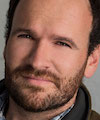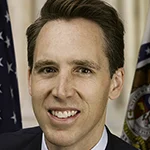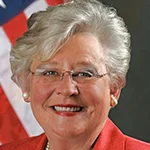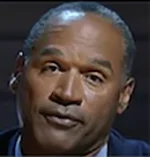 |
| Dan O'Mahony |
A debate continues to wage on in the public relations world regarding whether an earned or owned media strategy makes more sense. Should you focus on earned media, driven by proactive media relations? Or owned media where you build a following using self-published content on your media channels?
Large companies like Tesla have made recent headlines by “eliminating” their communications teams. Many startups and VCs from Coinbase to Andreessen Horowitz are similarly applying the “go direct” approach. The Clubhouse app is the new platform to reach audiences, but companies are using everything from YouTube to Twitter to their own hosted podcasts and other unique media properties.
Why are some companies choosing not to engage with the press? There’s more tension than ever between reporters and the companies they cover. It’s been building for a decade, and events like the Theranos fallout have only fueled the fire. Now, the press is holding tech companies accountable for not meeting oversized expectations and for the lack of diversity in the industry.
| This article is featured in O'Dwyer's Mar. '21 Food & Beverage PR Magazine (view PDF version) |
Every company is looking for the right media mix. It depends on their stage of growth, available resources and business objectives. Communications strategies hinge on broader, more strategic questions: Who is your audience? What do you want them to do? What change are you ushering in? What do you want to be known for?
Instead of deciding between earned vs. owned, consider these questions:
What’s your business goal and who are your audiences?
Earned media is called earned because someone else says good things about you. It builds credibility for a company or spokesperson and boosts awareness at a reach most companies don’t have. Owned media, on the other hand, creates an ongoing dialogue with your key audiences and the ability to build individual relationships. It assumes that you already have an audience that’s paying attention.
Let’s say you’re in the healthcare space and one key audience for you is senior citizens. Both earned and owned make sense to reach this audience. With earned media, this company can leverage the credibility of a reporter that senior citizens know and trust. With owned media, this company can create very specific, niche content that speaks to senior citizens, who then go on to share via their own social media channels.
If you’re selling an open source database technology to software developers, earned and owned both make sense too. With earned media, your technology could be included in a round-up alongside other popular solutions, which is beneficial for instant awareness. With owned media, you could create an ongoing Q&A on a key database topic and invite outside thought leaders to participate and share with their own channels, creating engagement and dialogue with your audience.
It’s hard to imagine a scenario where you would only pursue one strategy. Both strategies often make sense and if the story is consistent, the strategies help build on each other. That said, some companies are in a position where reporters cover them regardless of whether they engage with them.
Should you pick only one media strategy?
Facebook, Tesla or Apple can go direct because they have large consumer followings, celebrity CEOs and are able to produce massive amounts of owned content across many channels.
But for most companies out there, if you ignore the press there are two possible outcomes: you won’t get news coverage or the media will write a story via leaks and scandals. Likewise, if you decide to only “go direct” you will need to invest. It will take headcount, new technologies, partnerships and time to build an audience.
Are you ready for the media to distrust you?
In-house communications teams know this best. If you choose to ignore a problem and not talk about it with the press, that doesn’t mean press stop asking about it or covering it. In fact, it makes dealing with those issues more challenging. It invites scrutiny and turns your employees into spokespeople. Building an audience that trusts you is tough without the press.
These two strategies overlap, and should work in tandem, but they’re not the same. It’s a virtuous cycle that communicates transparency and openness.
***
Dan O’Mahony is Executive Vice President and San Francisco General Manager at Inkhouse.


 Republican tough guys Josh Hawley and Tom Cotton want Biden to send the National Guard to Columbia University to put an end to student protests... Bernie blasts Bibi for insulting America's intelligence by equating criticism of Israel's government with antisemitism... German court convicts former financial PR exec who claims he wasn't aware that trading on tips is illegal.
Republican tough guys Josh Hawley and Tom Cotton want Biden to send the National Guard to Columbia University to put an end to student protests... Bernie blasts Bibi for insulting America's intelligence by equating criticism of Israel's government with antisemitism... German court convicts former financial PR exec who claims he wasn't aware that trading on tips is illegal.  Southern governors claim they know what's best for their working class, and it's not pay raises... A Ukrainian human rights group played a key role in convincing House Speaker Mike Johnson to hold a vote to send arms to Ukraine, Israel and Taiwan... Trump Media & Technology Group blames short-selling and not lousy outlook for its stock slump.
Southern governors claim they know what's best for their working class, and it's not pay raises... A Ukrainian human rights group played a key role in convincing House Speaker Mike Johnson to hold a vote to send arms to Ukraine, Israel and Taiwan... Trump Media & Technology Group blames short-selling and not lousy outlook for its stock slump. The techniques deployed by OJ Simpson's defense team in the 'trial of the century' served as a harbinger for those used by Donald Trump... People worry about the politicization of medical science just as much as they fret about another pandemic, according to Edelman Trust Barometer... Book bans aren't restricted to red states as deep blue Illinois, Connecticut and Maryland challenged at least 100 titles in 2023.
The techniques deployed by OJ Simpson's defense team in the 'trial of the century' served as a harbinger for those used by Donald Trump... People worry about the politicization of medical science just as much as they fret about another pandemic, according to Edelman Trust Barometer... Book bans aren't restricted to red states as deep blue Illinois, Connecticut and Maryland challenged at least 100 titles in 2023. The NBA, which promotes legalized gambling 24/7, seems more than hypocritical for banning player for placing bets... Diocese of Brooklyn promises to issue press release the next time one of its priests is charged with sexual abuse... Truth Social aspires to be one of Donald Trump's iconic American brands, just like Trump University or Trump Steaks or Trump Ice Cubes.
The NBA, which promotes legalized gambling 24/7, seems more than hypocritical for banning player for placing bets... Diocese of Brooklyn promises to issue press release the next time one of its priests is charged with sexual abuse... Truth Social aspires to be one of Donald Trump's iconic American brands, just like Trump University or Trump Steaks or Trump Ice Cubes. Publicis Groupe CEO Arthur Sadoun puts competition on notice... Macy's throws in the towel as it appoints two directors nominated by its unwanted suitor... The Profile in Wimpery Award goes to the Ford Presidential Foundation for stiffing American hero and former Wyoming Congresswoman Liz Cheney.
Publicis Groupe CEO Arthur Sadoun puts competition on notice... Macy's throws in the towel as it appoints two directors nominated by its unwanted suitor... The Profile in Wimpery Award goes to the Ford Presidential Foundation for stiffing American hero and former Wyoming Congresswoman Liz Cheney.


 Have a comment? Send it to
Have a comment? Send it to 
No comments have been submitted for this story yet.